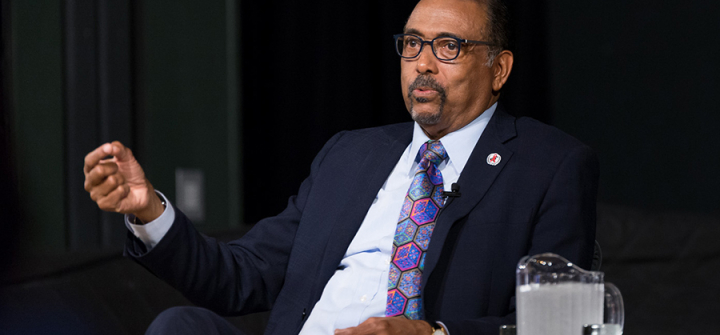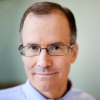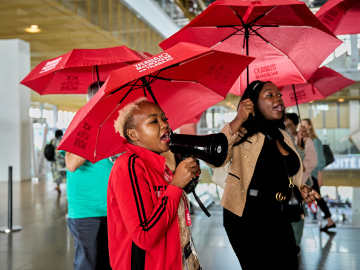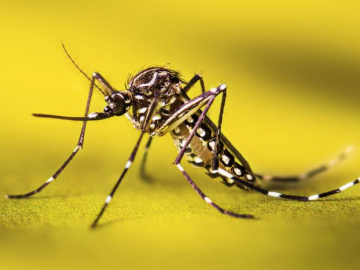HIV/AIDS: From Despair to Hope, A Q&A with Michel Sidibé, UNAIDS Executive Director, Part I
UNAIDS executive director Michel Sidibé can happily list the recent successes that the global community has scored against HIV/AIDS. And he can update you on progress of the 90-90-90 targets (by 2020, ensuring 90% of people with HIV will know their status; 90% of people diagnosed will have antiretroviral treatment, and 90% of people being treated will achieve viral suppression).
But the news is not all good. 17 million people worldwide still need treatment. And people often pushed to society’s margins, including men who have sex with men, sex workers and adolescent girls, are especially vulnerable because of a lack of access to prevention and needed treatment.
Still Sidibé, a canny global player known for his persuasive skills, is essentially optimistic about what can be achieved in the future. In mid-September, he sat down with Global Health NOW for an interview during a visit to the Johns Hopkins Bloomberg School of Public Health.
In the first part of this Q&A, Sidibe, who grew up in Mali, shared his thoughts 90-90-90, prospects for global HIV funding and his secret for working with national leaders. (Read Part II, touching on the future of UNAIDS, here.)
Could you give us an update on your 90-90-90 goal?
[This] is the first time in the fight against this epidemic that we can start thinking about breaking the backbone of it because never before we have been able to say that we reduce mortality by 50%. Never before we have been able to say that we are seeing an infection being reduced in some important countries like South Africa, in Zimbabwe, Zambia, and others.
[Also] for the first time, we have more people on treatment than people waiting for treatment. So, I think we are seeing a success story on 90-90-90. We are seeing already that almost 78% of people are being tested. We are seeing, globally, the numbers of people who have treatment exceed 58—close to 60%. So, we are very happy with what we are seeing with 90-90-90.
But 2020 is coming up very soon.
Yes. For the first time in history, we have been able to put more than 1.5 million people on treatment in 1 year. So, if we manage to continue and keep the same pace, we'll reach our goals in 90-90-90 by 2020 and we'll be able to really start to thinking about ... putting practically everyone on treatment by 2030. That is very important, [a] significant transformation.
People need to remember that, a few years back at the hospital, we were completely full of people dying. We moved truly from despair to hope. That is very important to really put out.
You've highlighted a lot of recent successes in the fight against HIV. Are you concerned that these successes will also breed complacency? And that people will be moving on and thinking about other things than focusing on and supporting—
I think the worst of conspiracy we have today is complacency. We are seeing that we are becoming victims of our success stories. Young people don't protect themselves anymore and the danger is that people feel that it is over. We can end it, but it's not over. We still have 17 million people who don't have access to treatment. We still have all the key populations—people who inject drugs, sex workers, men having sex with men, younger adolescent girls who are vulnerable, and the migrant population, and prisoners—all those group who are still affected by this epidemic in a very serious manner and we need to continue to be able to reach them. And to reach them, we need to change our policies and we need to change our service delivery approach, we need to make sure that the laws are not repressive.
This is a huge challenge. I mean, you're talking about not just changing laws but changing culture and attitudes-
Yes.
How do you go about that?
I think one of the major challenge in HIV/AIDS [is] we are talking about sex. When you talk about sex, you talk about cultural setting, you're talking about individual, and you talk about more emotional approaches. We cannot afford to not foster … a link between the scientific evidence and social change. And to do that, community leaders are critical. To do that, women leaders are critical. To do that, young people are critical. To do that, church[es] are critical. To do that, you need to have politicians. And today we don't have 1 HIV epidemic, we have a multiple epidemics. So, I personally feel that each epidemic needs a specific approach. And we need to internalize that and to understand and to really develop strategies, which will help us to address them.
Do you see a growing intolerance for marginalized people that you've talked about?
I think I am seeing grave conservatism—people who are not understanding why we are really spending a lot of money, and energy, and time to really reach people who inject the drugs. But I think we are working with them, we are seeing transformation happening. We are seeing, in China it was zero tolerance for drug users a few years back. Today, they have the biggest harm reduction programs, with methadone and other distribution, in Asia. I think it's important to bring evidence. Scientific evidence to discuss with politicians. Make them understand what we are losing by losing population—a segment of society, which are completely decimated because they have to hide themselves.
So, the Trump Administration had proposed very drastic cuts in HIV. What's your strategy for ... How do you respond to that?
[With their] compassion, and their personal investment, [Americans have saved] so many lives from PEPFAR. I am not so convinced that we'll have a drastic cut. But if we have, it will have a reborn epidemic. Mortality will be, again, higher and our gains could be lost, and I am scared that it will even bring resistance because we are 19.5 million people on treatment, 17 million waiting. It's a successful history. It's a successful program. So I think Congress and the Senate will probably maintain their commitment to HIV/AIDS program.
But we need, also, to be more efficient. We need to think about cost effectiveness. We need to think about long term and that's where I've been working with leaders, with politicians in Africa, to bring sustainability. It is the only disease where we have a 57% of a total investment today coming from domestic resources. Which is very important because we are progressively trying to show that it will not be just the taxpayer of the US for now and forever. We are trying to change, to bring investment case for countries. South Africa, today, is putting almost $2 billion from their own budget to support the AIDS programs and they are one of the biggest AIDS program today in the world. They have the biggest treatment program in the world, close to 4 million people on treatment.
Does that message resonate with the US Congress?
I think, personally, if I were them, that's what will resonate because I want to know if I will pay forever.
You're well known for your persuasiveness, especially working with national leaders, over whom you don't have real power, but you're very persuasive. What's your secret?
I try always to make sure that people will be sure that I am genuine and that what I'm trying to push for is not for him as a privilege, or for me, but it is for people who are out there, or who … are waiting for their support. I think when you talk about dignity, respecting dignity of people, when you talk about building society, which will really be more tolerant, I think leaders tend to respond to those type of questions because it's touching anyone. It's touching anyone, no one want his child, or his wife, or his dignity not being respected.
So, I think, I try to always to be evidence based, try to demonstrate that it's cost effective, try also to put a dream in whatever we do. Without dreams, it's not possible. Leaders—they are so much taken hostage by difficult issues every day. If you manage to make them believe that … their legacy will be no babies born with HIV. I think they're looking for islands of hope.
When you're looking to persuade people, what's more effective? Data or stories?
Stories. Stories. I think human stories is for me, more effective than data. Data is coming as a second element. You always convince people because you make them connect to a real story… . The story is the most important tool for communicating.
Ed. Note: Read part II of the interview here.
CORRECTION
A previous version of the story incorrectly stated the number of people on antiretroviral treatment because of a transcription error. It is 19.5 million, not 90 million. GHN regrets the error.
Join the thousands of subscribers who rely on Global Health NOW summaries and exclusive articles for the latest public health news. Sign up for our free weekday enewsletter, and please share the link with friends and colleagues:http://www.globalhealthnow.org/subscribe.html
UNAIDS Executive Director Michel Sidibé at the Johns Hopkins Bloomberg School of Public Health Alumni Day, September 15, 2017. Image by Mitro Hood.





